Economic Evaluation on"Planting Three to Produce Four"High-yielding Project of Super Hybrid-rice in Hunan
2015-12-14WenDENGJimingPENGYingLIULongxinJINHanLIUJunLIUZhenguoHUANG
Wen DENG, Jiming PENG, Ying LIU, Longxin JIN, Han LIU, Jun LIU, Zhenguo HUANG
1. Agricultural Economy and Regional Planning, Hunan Academy of Agricultural Sciences, Changsha 410125, China;
2. Hunan Hybrid Rice Research Center, Changsha 410125, China
It is known that increases of grain yield and farmer’s incomes lay foundation for strengthening agriculture and advancing national development.Rice is a staple food in China.In 2014, rice yield reached 206.427 billion kg, representing 34% of total grain yield. The research on super hybrid-rice started from the early of the 1980s, and none successful research can be found abroad yet. Domestically,the 1st, 2ndand 3rdphases targets were accomplished in 2000, 2004 and 2010 respectively, with the super hybrid-rice of 10 500,12 000 and 13 500 kg/hm2. In 2014, the target of the 4thphase was achieved also with super hybrid rice of 15 000 kg/hm2by Yuan Longping[1].Until 2014,there were 111 super hybrid rice varieties named by Ministry of Agriculture for extension, including 76 super hybrid rice varieties.
The "planting three to produce four"project is an assumption on grain safety strategy proposed in 2006 by Yuan Longping on basis of the severe situation of increasing population and decreasing land, as well as progress made on super hybrid rice[2]. The project refers to making use of lands with an area of 3 hm2to produce grains which should have been produced in the lands with an area of 4 hm2.What’s more, the project was initially applied in Hunan in 2007 and over 4 billion kg rice was harvested. Currently,the project has been applied in Henan, Anhui, Guangdong, Guangxi,Guizhou, Yunnan, Hubei, and Sichuan,laying foundation for national grain safety.
In the context of China’s economy slowdown, however, the benefits from growing rice has become a key factor influencing farmers’ decision[3].It is believed that there is a conflict between grain safety and farmer’s income growth[4]. Therefore, it is an ur gent problem to be resolved as for whether the project of "planting three to produce four" will increase rice yields and enhance farmer’s incomes simultaneously. The research collected information widely through field survey and made economic evaluationin order to provide references for government decision-making and promote coordinated development of rice yield increasing with farmer’s income growth to guarantee national grain safety.
Research Method and Sample Analysis
Research method and data source
The "planting three to produce four"project was applied from 20 to 52 demonstration counties, districts or cities from 2007 to 2014, and five planting models have been shaped,covering double super rice (super hybrid early rice and super hybrid late rice), early super rice (super hybrid early rice and highly-qualified normal late rice), middle-season super hybrid rice,one-season super hybrid late rice,super hybrid late rice (highly-qualified normal late rice and super hybrid late rice)[5]. In 2014, the project team selected double super rice (super hybrid early rice and super hybrid late rice)from Changsha County and Liling City,early super rice(super hybrid early rice and highly-qualified normal late rice)from Heshan District, one-season super hybrid late rice from Lixian County,middle-season super hybrid rice from Longhui County, super hybrid late rice(highly-qualified normal late rice and super hybrid late rice) from Lianyuan City as test materials and collected information from agricultural administrative departments from different counties,districts and cities.Furthermore,a questionnaire survey was conducted among 20 farm households and 10 farm households in core demonstration area and non-demonstration area,respectively,on double super rice(super hybrid early rice and super hybrid late rice), early super rice (super hybrid early rice and highly-qualified normal late rice),middle-season super hybrid rice,one-season super hybrid late rice, super hybrid late rice (highlyqualified normal late rice and super hybrid late rice) in terms of production cost, yield, price and subsidy. It is notable that only production cost of late rice was surveyed in Changsha County and Liling City because of objective reasons. Based on data sorting and checking, variance analysis and grey relational analysis were carried out with DPS.
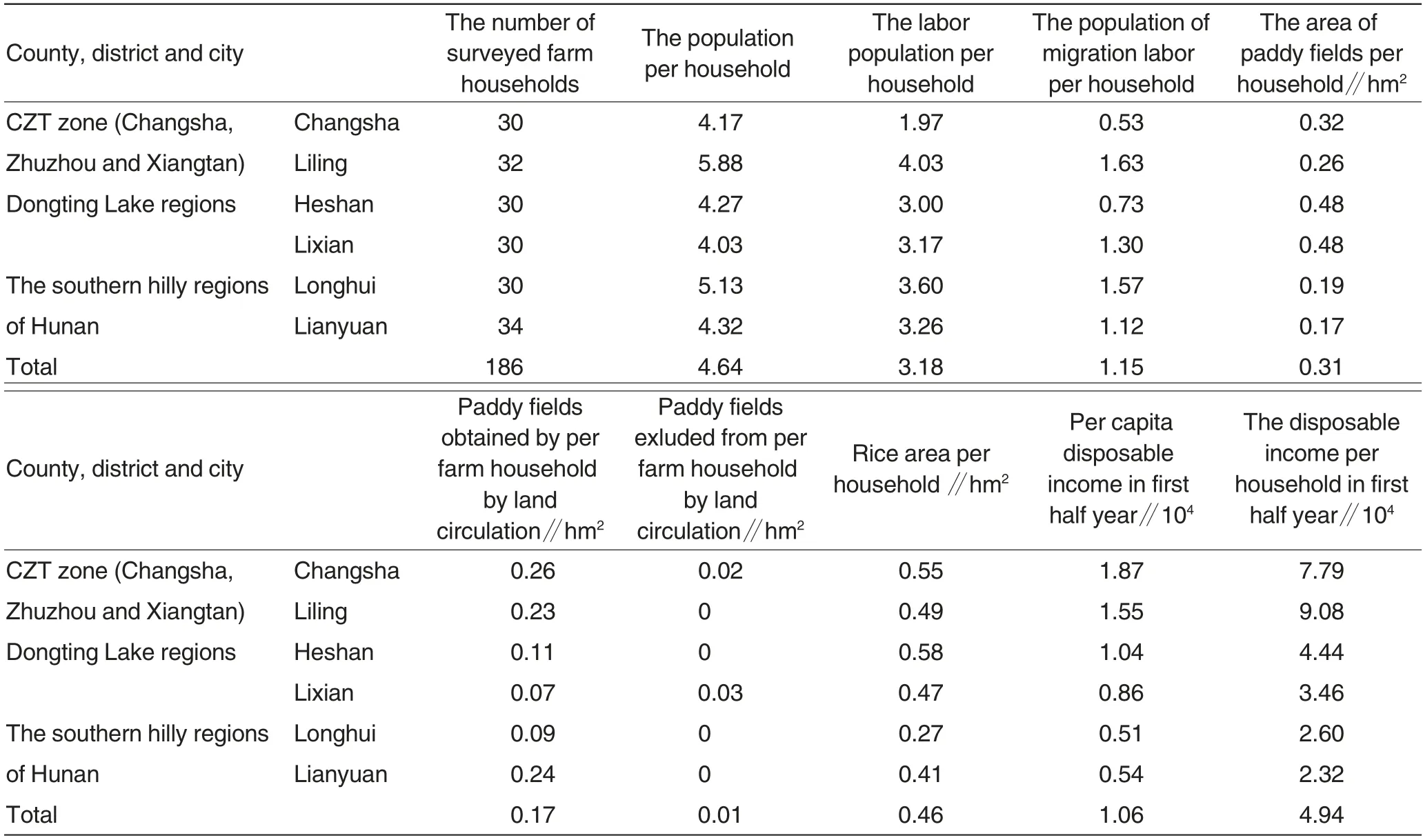
Table 1 Basic information of sample farm households
Introduction of sample farm households
As shown in Table 1, sample areas tended to be volatile in terms of migration work, land circulation, growing scale of rice,and economic development. For example, the proportion of labor migration is as high as 38.98%in middle and southern hilly regions of Hunan, which was 5.31% and 6.31%higher compared with CZT zones(Changsha, Zhuzhou and Xiangtan)and Dongting Lake regions, possibly caused by annual per capita disposable incomes. Furthermore, the circulation areas of paddy fields in CZT zones (Changsha, Zhuzhou and Xiangtan) and middle and southern hilly regions of Hunan represented 48.92%and 45.94% to rice farmlands, which kept 28.8% and 25.81% higher compared with Dongting Lake regions.Besides, growing area of rice averaged 0.52 hm2in CZT zones (Changsha,Zhuzhou and Xiangtan) and Dongting Lake regions, which was 50% higher than that of middle and southern hilly regions of Hunan.
Results and Analysis
Comparisons of yield increasing by different planting models
As shown in Table 2, the five planting models were applied in Changsha, Liling, Heshan, Longhui,Lixian, Lianyuan counties. Specifically, the area of hybrid rice reached 668 630 hm2and per unit area yield averaged 8 249.24 kg/hm2, increasingby 22.39% compared with ordinary rice of 1.108 5 million hm2. The yield increases per unit area from high to low were one-season super hybrid late rice, middle-season super hybrid rice,super hybrid late rice (highly-qualified normal late rice and super hybrid late rice), double super rice (super hybrid early rice and super hybrid late rice),and early super rice (super hybrid early rice and highly-qualified normal late rice), of which the increased yield of one-season super hybrid late rice dominated, and the rest showed insignificant differences.
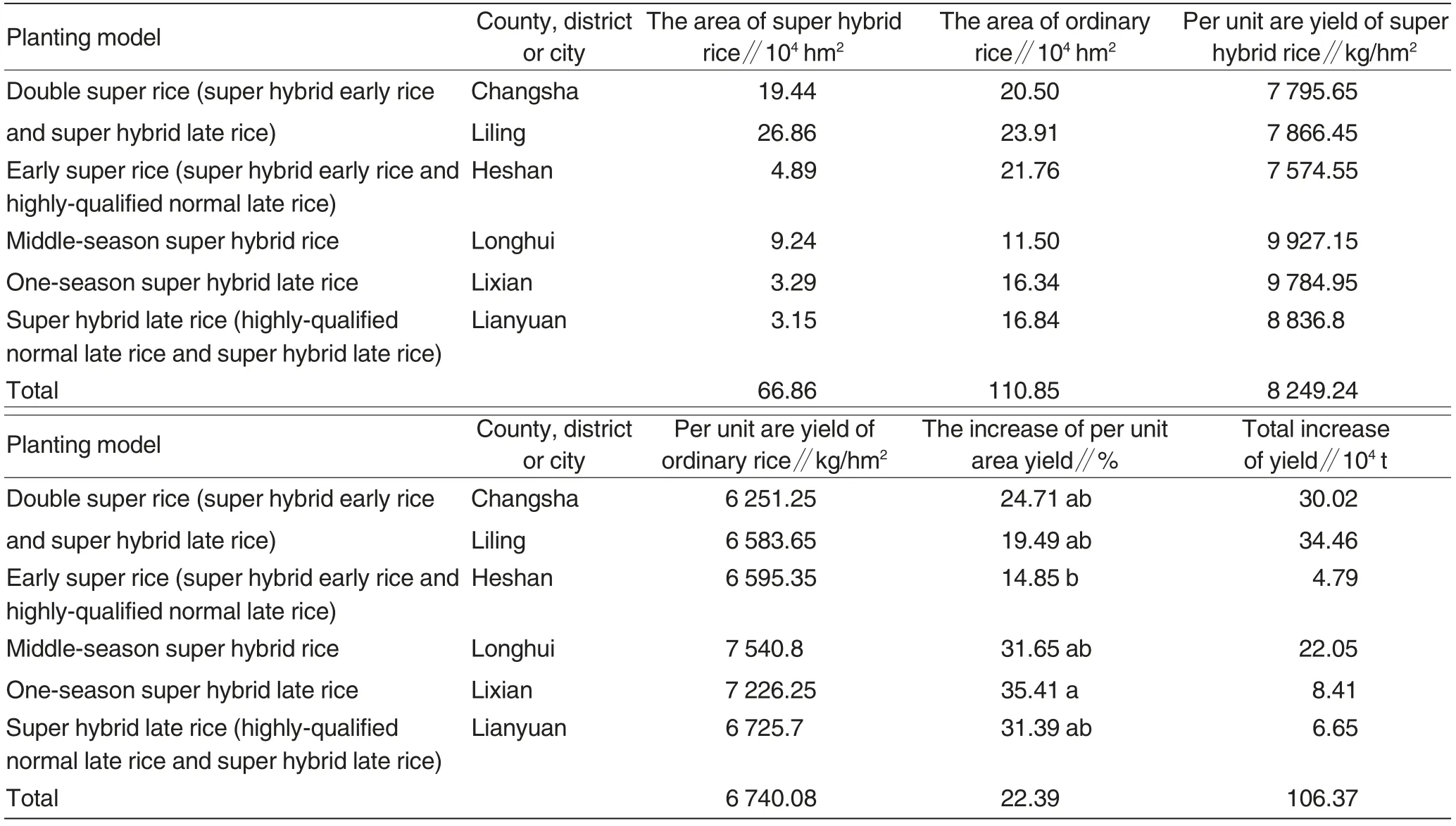
Table 2 Yield increases by different planting models of"planting three to produce four"project in 6 counties,districts or cities during 2007-2014
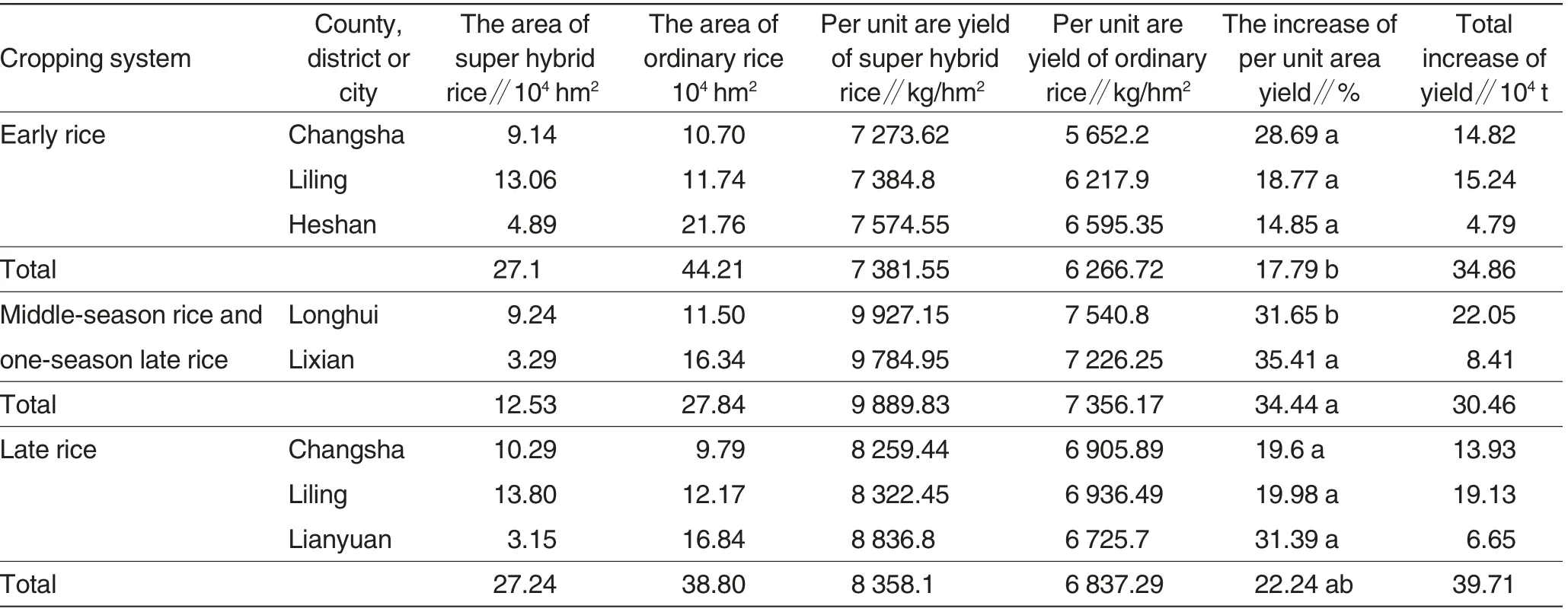
Table 3 Yield increases of the"planting three to produce four"project during 2007-2014
Comparisons of yield increases by different planting models
As shown in Table 3, "planting three to produce four" project was applied in Changsha, Liling and Heshan,totaling 270 960 hm2. The average yield reached 7 381.55 kg/hm2, which improved by 17.79% compared with ordinary rice and the per unit area yields from high to low were Chasha,Liling and Heshan, showing insignificant differences.Besides,middle-season super hybrid rice and one-season super hybrid late rice were grown in Longhui and Lixian, totaling 125 200 hm2and per unit area yield averaged 9 889.83 kg/hm2, increasing by 34.44% compared with ordinary rice and one-season super hybrid late rice with an area of 278 400 hm2.The yield increase of Lixian was significantly higher than that of Longhui. Super hybrid late rice with an area of 272 430 hm2was applied in Changsha, Liling and Lianyuan counties and average per unit area yield reached 8 358.1 kg/hm2, increasing by 22.24% com-pared with ordinary rice. The yield increases from high to low were Lianyuan, Liling and Changsha, showing insignificant differences. Of the 6 counties,districts or cities,the yield increases of rice varieties from high to low were middle-season super hybrid rice and one-season super hybrid late rice >super hybrid late rice >super hy-
brid late rice,and the yield increases of middle-season super hybrid rice and one-season super hybrid late rice dominated.
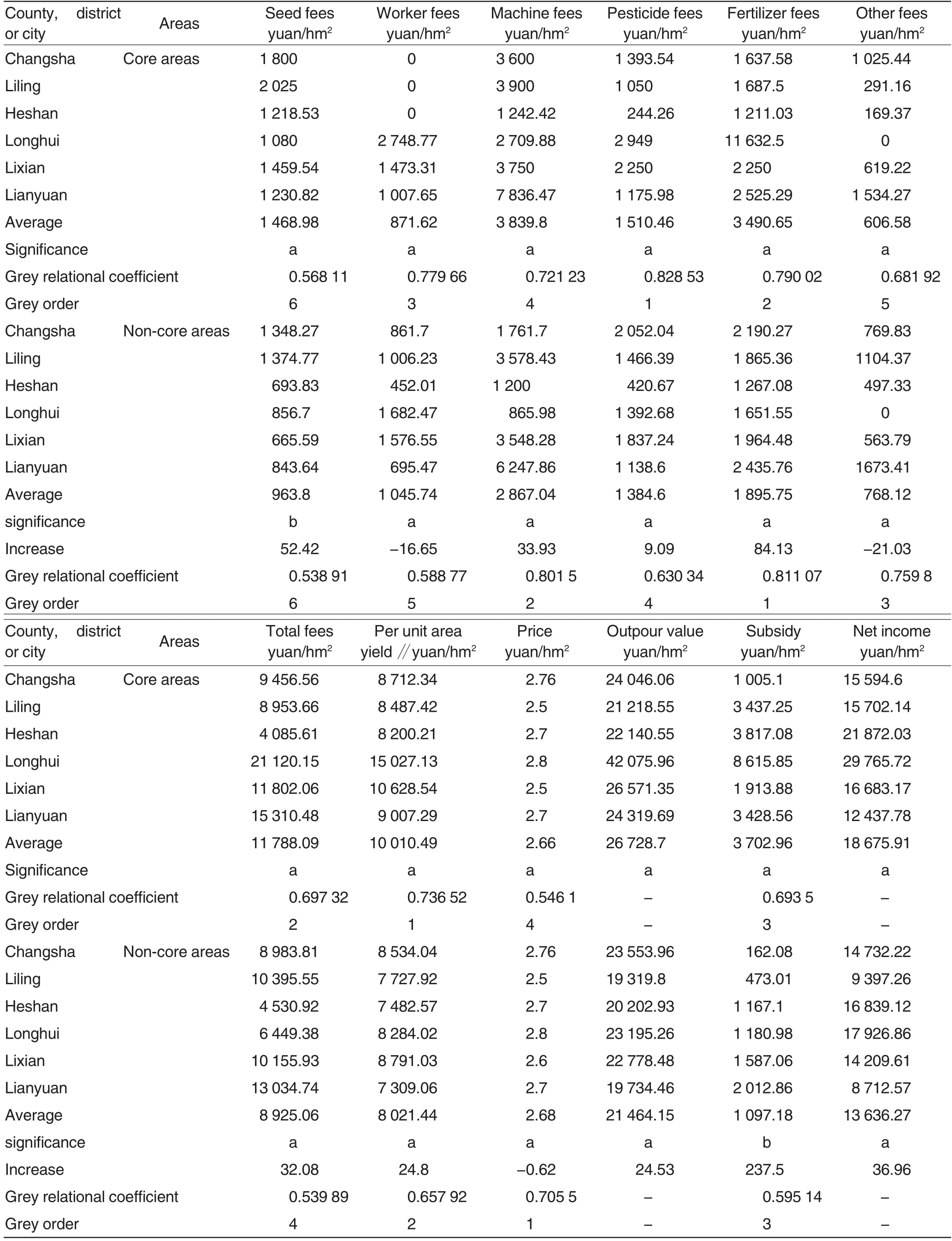
Table 4 Profits of core and non-core areas applied with"planting three to produce four"project in 6 counties,districts and cities in 2014
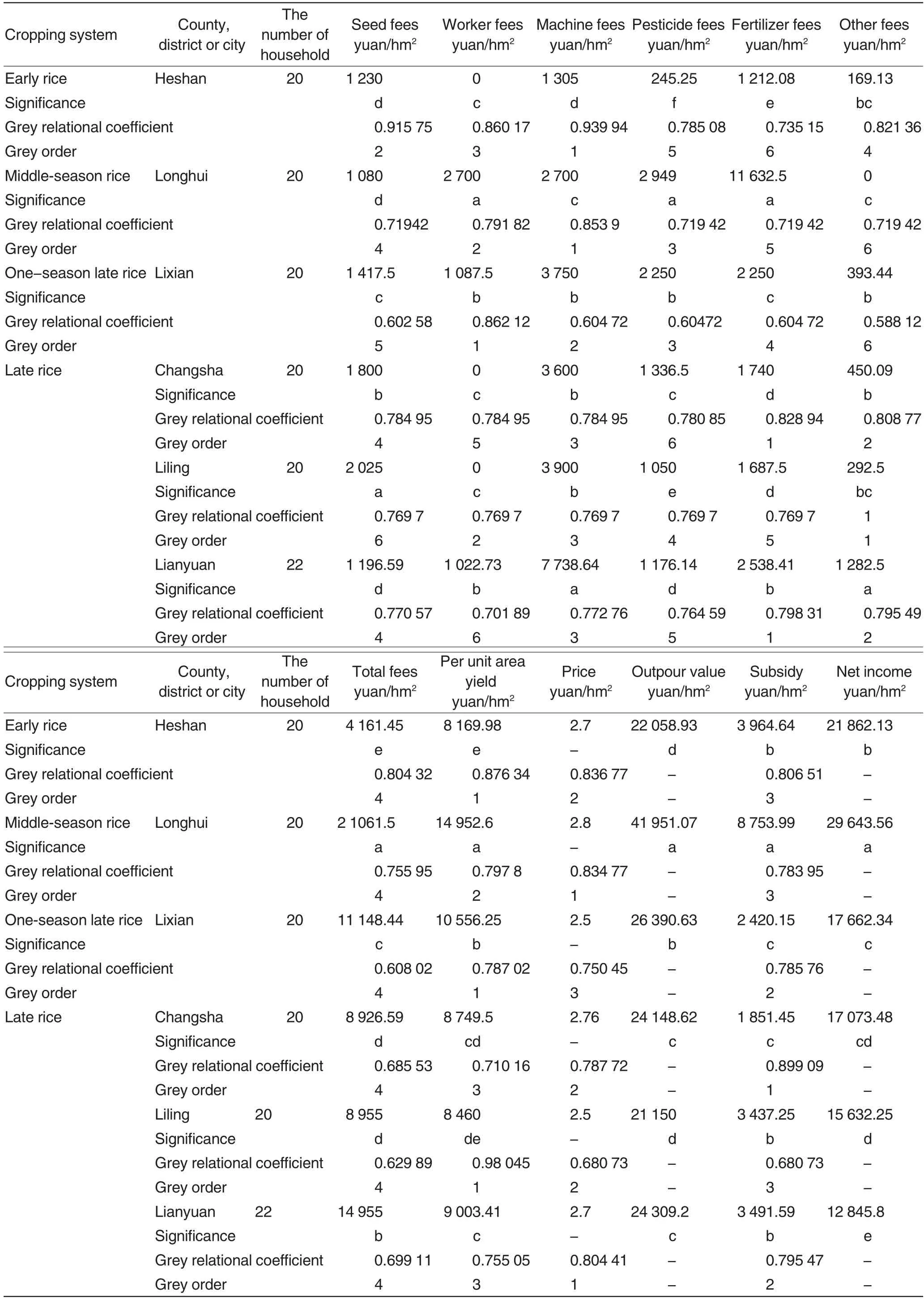
Table 5 Profits in core areas applied with"planting three to produce four"project in June 2014
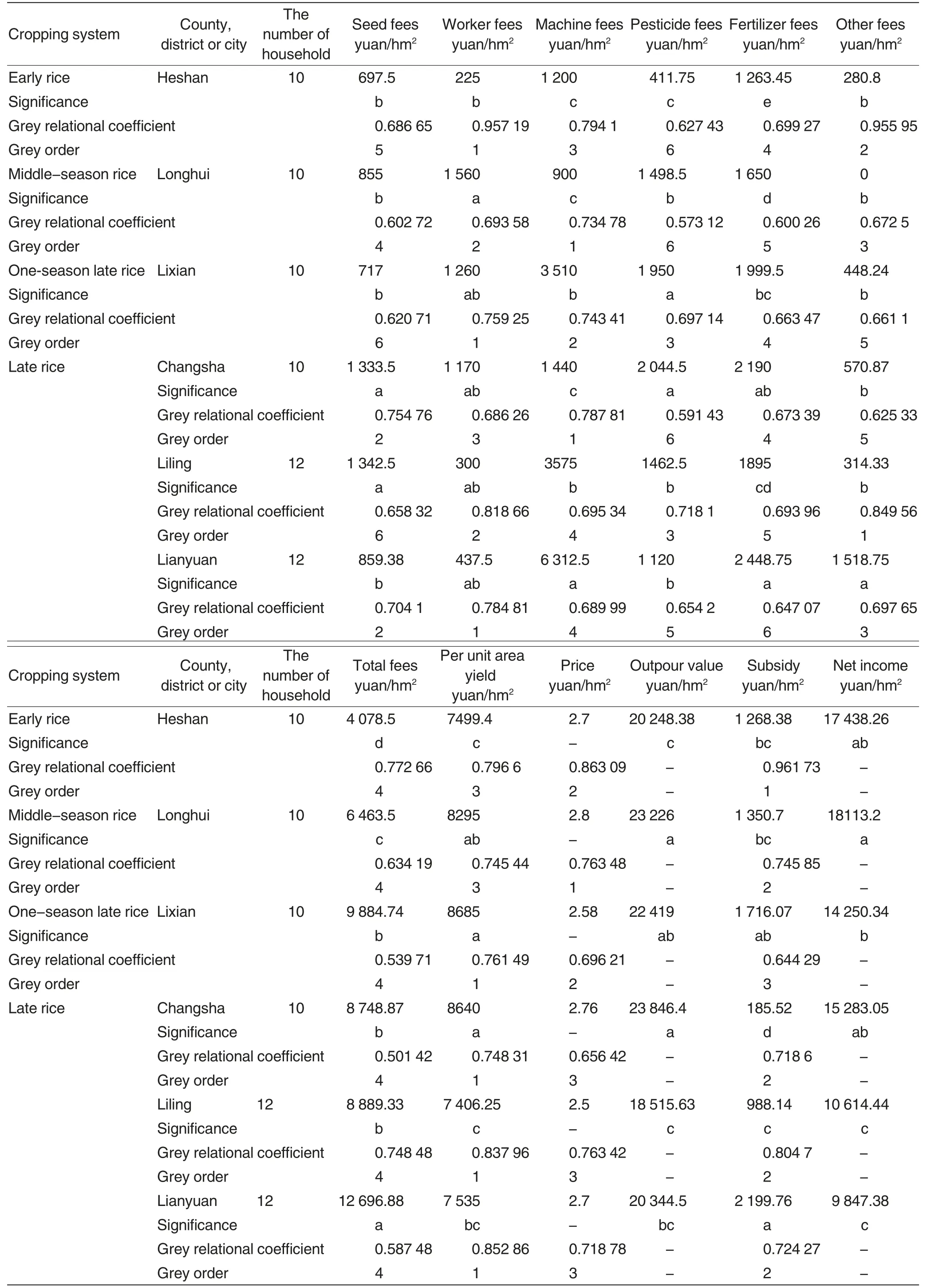
Table 6 Profits in non-core areas applied with"planting three to produce four"project in June 2014
Comparisons of benefits in core zones and non-core zones
As shown in Table 4, the fees of the "planting three to produce four"project totaled 11 788.09 yuan/kg in core areas, which was 32.08% higher compared with rest areas.Specifically,seed fees in core areas was 52.42%higher;the fertilizer,machine,and pesticides fees kept 84.13%,33.93%,and 9.09% higher, and other fees and worker fees were 21.03% and 16.65%lower. What’s more, per unit area yield, output value and net income in core areas were 10 010.49 kg/hm2,26 728.7 yuan/hm2, and 18 675.91 yuan/hm2, which kept 24.8%, 24.53%and 36.96% higher. Besides, subsidy in core areas was 237.5% higher and prices in different areas maintained similar. According to grey relational analysis, it showed pesticide fees>fertilizer fees >worker fees >machine fees>other fees>seed fees in core areas and fertilizer fees>machine fees>other fees >pesticide fees >worker fees>seed fees in non-core areas.Additionally, the relational degrees with net incomes were per unit area yield>total fees>subsidy>price in core areas and price>per unit area yield>subsidy>total fees in non-core areas.
Comparisons of profits in core areas applied with "planting three to produce four"project
As shown in Table 5, in core areas, net incomes, total fees, per unit area yield, output value, and subsidy from high to low were middle-season rice in Longhui>early rice in Heshan>one-season super hybrid late rice in Lixian>late rice in Changsha>late rice in Liling>late rice in Lianyuan,middleseason rice in Longhui >late rice in Lianyuan>one-season late rice in Lixian>late rice in Liling >late rice in Changsha>early rice in Heshan, middle-season rice in Longhui >one-season late rice in Lixian >late rice in Lianyuan >late rice in Changsha >late rice in Liling>early rice in Heshan,early rice in Longhui>one-season late rice in Lixian>late rice in Lianyuan>late rice in Changsha>early rice in Heshan>late rice in Liling, middle-season rice in Longhui >one-season late rice in Lixian>late rice in Lianyuan >late rice in Changsha >early rice in Heshan >late rice in Liling, middle-season rice in Longhui>early rice in Heshan>late rice in Lianyuan >late rice in Liling >oneseason late rice in Lixian >late rice in Changsha. The grey relational analysis indicated that the most influential factors of early rice in Heshan,middleseason rice in Longhui, one-season late rice in Lixian, late rice in Changsha, late rice in Liling, and late rice in Lianyuan with total fees included machine fees, worker fees, fertilizers fees,other fees and fertilizer fees,and the most influential factors with net incomes included per unit area yield,price, per unit area yield, subsidy, per unit area yield and price.
Comparisons of profits in nonecore areas applied with "planting three to produce four"project
As shown in Table 6, in non-core areas,net incomes,total fees,per unit area yield, output value, and subsidy from high to low were middle-season rice in Longhui>early rice in Heshan>late rice in Changsha>one-season super hybrid late rice in Lixian>late rice in Liling>late rice in Lianyuan,late rice in Lianyuan >one-season late rice in Lixian >late rice in Liling >late rice in Changsha >middle-season rice in Longhui >early rice in Heshan, oneseason late rice in Lixian>late rice in Changsha >middle-season rice in Longhui >late rice in Lianyuan >early rice in Heshan >late rice in Liling, late rice in Changsha >middle-season rice in Longhui>one-season late rice in Lixian>late rice in Lianyuan>early rice in Heshan>late rice in Liling, late rice in Lianyuan > one-season late rice in Lixian>middle-season rice in Longhui>early rice in Heshan >late rice in Liling>late rice in Changsha. The grey relational analysis indicated that the most influential factors of early rice in Heshan, middle-season rice in Longhui, one-season late rice in Lixian,late rice in Changsha, late rice in Liling,and late rice in Lianyuan with total fees included worker fees,machine fees,worker fees,machine fees,other fees,and worker fees,and the most influential factors with net incomes included subsidy, price, per unit area yield, per unit area yield, per unit area yield, per unit area yield, and per unit area yield.
Conclusions
The research indicated that since application of "planting three to produce four" project, yield increases become significant, especially for oneseason super hybrid late rice, mainly contributed by Zhuliangyou No.819,Luliangyou No.996, Lingliangyou No.268, Y you No.900, Y liangyou No.1,Wuyou No.308, H you No.518, and Fengyuanyou No. 299, as well as improvement-oriented cultivation, nitrogen-saving and lodging-resistant technology, balance fertilization, returning straws to farmlands, comprehensive preventions on diseases and pests, and machine-based cultivation technology.
In general, per unit area yield,output value, subsidy, and net incomes in core areas all kept higher compared with non-core areas,as well as fertilizer fees, seed fees, machine fees and pesticide fees.
Either in core areas or non-core areas,net incomes,total fees,per unit area yield, output value, and subsidy tended to be volatile upon counties,districts or cities. Net income of middle-season rice was the highest in Longhui.
It can be concluded that per unit area yield is the factor with the highest relational degree with net income, followed by price and subsidy, and machine fees and worker fees are the factors with the highest relation with total fees, followed by fertilizer fees and other fees. It is obvious that to increase per unit are yield is key for improving net incomes and to reduce machine fees and worker fees is crucial for decreasing fees.
[1]LONG J (龙军). A successful accomplishment on key targets of super hybrid rice in the 4thphase in China (中国超级稻成功实现第四期攻关目标)[N].Guangming Daily (光明日报), 2014-10-11(03)
[2]YUAN LP (袁隆平). Proposal of implementing the “planting three to produce four” high-yielding project on super hybrid rice(实施超级杂交稻“种三产四”丰产工程的建议)[J].Hybrid Rice (杂交水稻),2007,22(4):1
[3]SHEN HF(申红芳),LIAO XY (廖西元),WANG ZG(王志刚).Surveys and policy suggestions on increasing yield and farmer’s incomes in China(当前我国粮食增产粮农增收途径的调查与政策建议)[J].China Rice(中国稻米),2012,18(1):19-22.
[4]HOU SP (侯胜鹏), ZENG FS (曾福生).Discussion on coordinated development of country’s food security and peasantry’s income increase(浅论国家粮食安全与农民增收的协调发展)[J]. Research of Agricultural Modernization(农业现代化研究), 2009, 30 (4): 427-429,437
[5]PENG JM(彭既明).To enhance sustainable increase of food production by steadily implementing the “planting three to produce four” high-yielding project of super hybrid rice (稳步推进“种三产四”丰产工程,促进粮食持续稳定增长)[J].Hybrid Rice (杂交水稻),2012,(3):1-4.
猜你喜欢
杂志排行
Agricultural Science & Technology的其它文章
- Evaluation on Suitability of Camellia sinensis Planting Based on GIS
- Light Quality-controlled Phytochemicals Biosynthesis in Vegetables and Fruits
- Cloning and Characterization of Phytochrome A Gene FaPHYA from Tall Fescue
- Genetic Analysis of Embryo Production Frequency in Wheat×Maize Cross
- The Application Effects of Truly Biodegradable Mulch in Potato Farmlands
- The Analysis and Prospect of Development of Fresh Cut Flower Industry Based on the Patent Analysis
